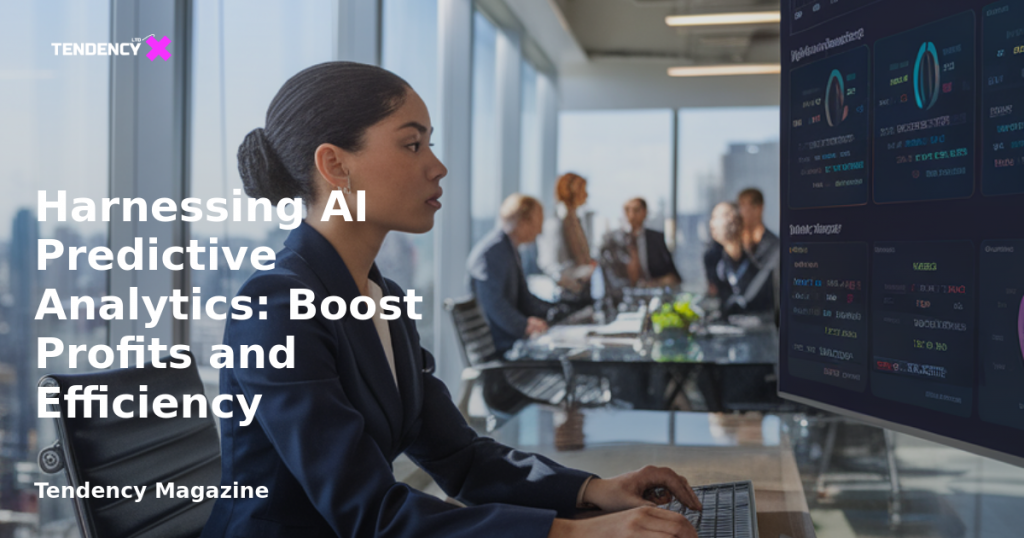Harnessing AI Predictive Analytics: Boost Profits and Efficiency

Table of Contents:
- Introduction to AI Predictive Analytics
- Understanding AI Predictive Analytics
- Traditional vs. AI-Powered Predictive Analytics
- Core Components of AI Predictive Analytics
- Key Benefits of AI Predictive Analytics
- Practical Applications Across Industries
- Conclusion
Introduction to AI Predictive Analytics
Predictive analytics has revolutionized how businesses operate by providing insights that were once considered unattainable. A prime example is Subway’s decision to retire its $5 footlong promotion after analytics revealed that increased sales did not compensate for the discounted price. By adjusting strategies based on predictive insights, Subway was able to enhance profitability. This illustrates the transformative power of predictive analytics, particularly when augmented by artificial intelligence (AI).
Understanding AI Predictive Analytics
AI predictive analytics involves using machine learning models to identify patterns in existing data and predict future outcomes. These models are trained on historical data, enabling businesses to turn raw data into actionable insights. For instance, AI can analyze a customer’s buying history to predict future purchases and offer personalized recommendations, thereby enhancing customer engagement and sales.
Traditional vs. AI-Powered Predictive Analytics
Traditional predictive analytics relies on data scientists to collect and analyze data using techniques like decision trees and regression models. While effective, this approach is labor-intensive and slower. In contrast, AI-powered predictive analytics automates data collection and analysis, leveraging machine learning to process vast amounts of data quickly. This automation not only speeds up the process but also improves accuracy and adaptability over time.
Core Components of AI Predictive Analytics
1. Data: The foundation of any predictive model, data must be collected and prepared meticulously. In eCommerce, this might include customer demographics, purchase history, and preferences.
2. Algorithms: These are the engines that drive predictive models, using complex mathematical formulas to analyze data and generate insights. Advanced algorithms, such as deep learning and neural networks, can uncover intricate patterns within large datasets.
3. Predictions: The ultimate goal of predictive analytics is to forecast future trends and outcomes. By continuously refining models with new data, businesses can improve the accuracy of their predictions, allowing for more informed decision-making.
Key Benefits of AI Predictive Analytics
1. Increased Efficiency: By automating data analysis, AI predictive analytics reduces manual workloads, optimizes resource allocation, and enhances operational efficiency. For instance, FedEx uses predictive analytics to optimize delivery routes, reducing costs and improving service.
2. Better Decision-Making: With access to real-time insights, businesses can make informed decisions that are responsive to changing market conditions. This agility allows companies to pivot strategies effectively, as demonstrated by Subway’s pricing adjustments.
3. Improved Risk Management: Predictive analytics can identify potential risks before they escalate, enhancing fraud detection and prevention. For example, HSBC has reduced false positives in fraud detection by 60% using predictive analytics.
4. Enhanced Customer Service: By understanding customer behavior, businesses can tailor their services to meet individual needs, improving satisfaction and loyalty. Netflix’s recommendation engine is a prime example of using predictive analytics to enhance user experience.
Practical Applications Across Industries
1. Logistics: Predictive analytics optimizes supply chain operations by forecasting demand and identifying bottlenecks. Companies like DHL have integrated this technology to adapt to real-time demands and improve efficiency.
2. Finance: Financial institutions use predictive analytics for risk management, fraud detection, and creditworthiness assessment, allowing for more accurate financial projections and decision-making.
3. Retail: Both online and brick-and-mortar retailers utilize predictive insights to personalize shopping experiences and manage inventory effectively. Walmart, for instance, uses AI to predict demand and maintain optimal stock levels.
4. Healthcare: In healthcare, predictive analytics maximizes patient outcomes by identifying risk factors and personalizing treatment plans. The Mayo Clinic uses this technology to predict disease progression and optimize care.
Conclusion
AI predictive analytics is a game-changer for businesses seeking to enhance profits and efficiency. By leveraging this technology, companies can gain a competitive edge through improved decision-making, risk management, and customer service. As industries continue to embrace AI predictive analytics, the potential for innovation and growth is limitless. For businesses looking to thrive in the digital age, adopting predictive analytics is not just an option—it’s a necessity.
2025 Tendency LTD. All rights reserved.

